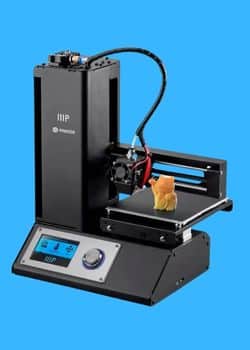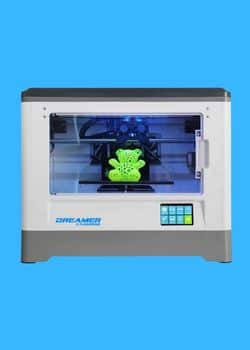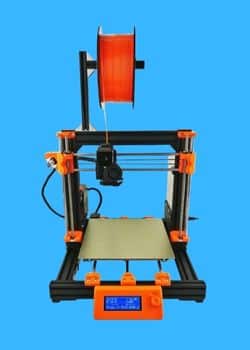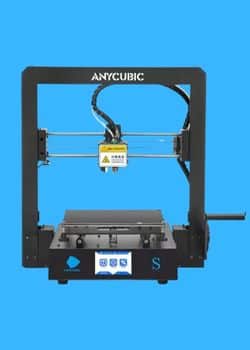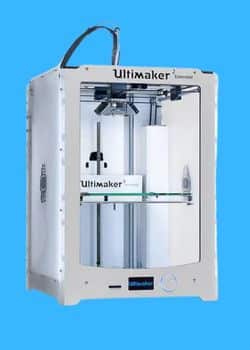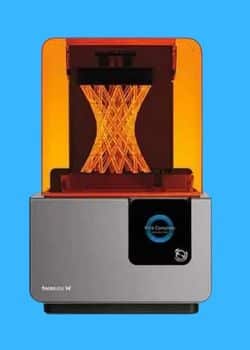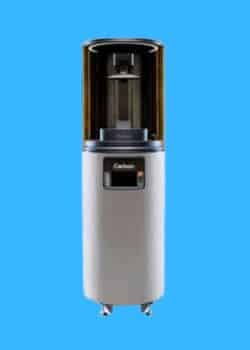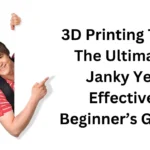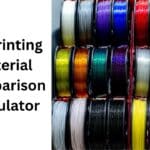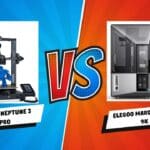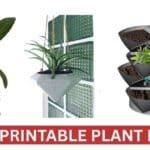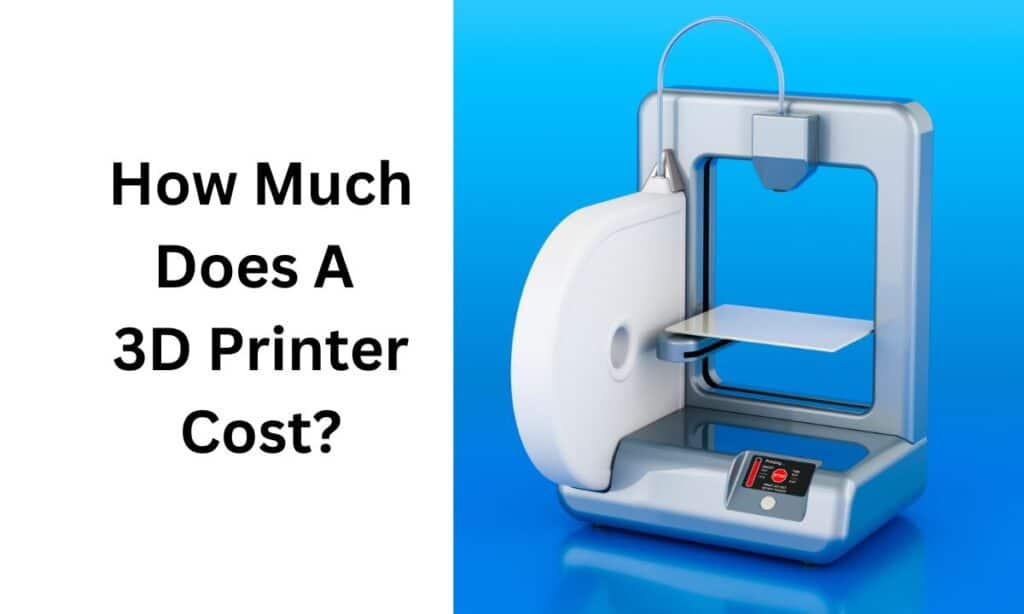
3D printers have come a long way in recent years, becoming more affordable and accessible to a wider range of users. If you’re considering purchasing a 3D printer, one of the first questions you’ll likely ask is, “How much does a 3D printer cost?”
How to Choose the Right 3D Printer for Your Needs
Affiliate Disclosure
We participate in Amazon affiliate programs, earning fees from qualifying purchases via links at no extra cost to you. It’s how we keep this blog rolling and my 3D printers buzzing with fresh filament for reviews like this one!
With so many factors affecting the price, choosing the right 3D printer can feel overwhelming. Here are key questions to guide your decision-making:
- What will you be printing? Consider whether you’ll be printing small parts, large prototypes, or intricate details. This will determine the build volume and print quality you require.
- What is your budget? Entry-level printers are a great starting point, but professionals might need to invest in higher-end models.
- How often will you use it? Frequent users may benefit from investing in a durable, high-end printer with advanced features, while casual users can get by with more affordable options.
- What materials will you use? FDM printers are limited to plastics, while SLA and SLS printers allow for more versatility with materials like resin and metal.
Factors That Affect the Cost of a 3D Printer
The cost of a 3D printer can vary greatly depending on several key factors:
- Type of 3D Printer: There are multiple types of 3D printers, each with its own pricing range. The most common types are Fused Deposition Modeling (FDM), Stereolithography (SLA), and Selective Laser Sintering (SLS) printers. Generally, FDM models are more affordable, while SLA and SLS tend to cost more.
- Build Volume: The build volume refers to the maximum size of an object the printer can produce. Larger build volumes usually come with a higher price tag.
- Print Quality: Higher resolution and better accuracy typically cost more. Some printers are designed for ultra-precise details, which is essential for professional and industrial use.
- Features: Additional features such as dual extrusion (for printing in two colors or materials), automatic bed leveling, and wireless connectivity can significantly increase the price.
- Brand and Model: Well-known brands often come with higher price points, especially if they offer a proven track record for durability, precision, and support.
With so many factors to consider, it can be difficult to know how much to expect to pay for a 3D printer. However, in general, you can expect to pay anywhere from a few hundred dollars to several thousand dollars.
Different Types of 3D Printers Explained
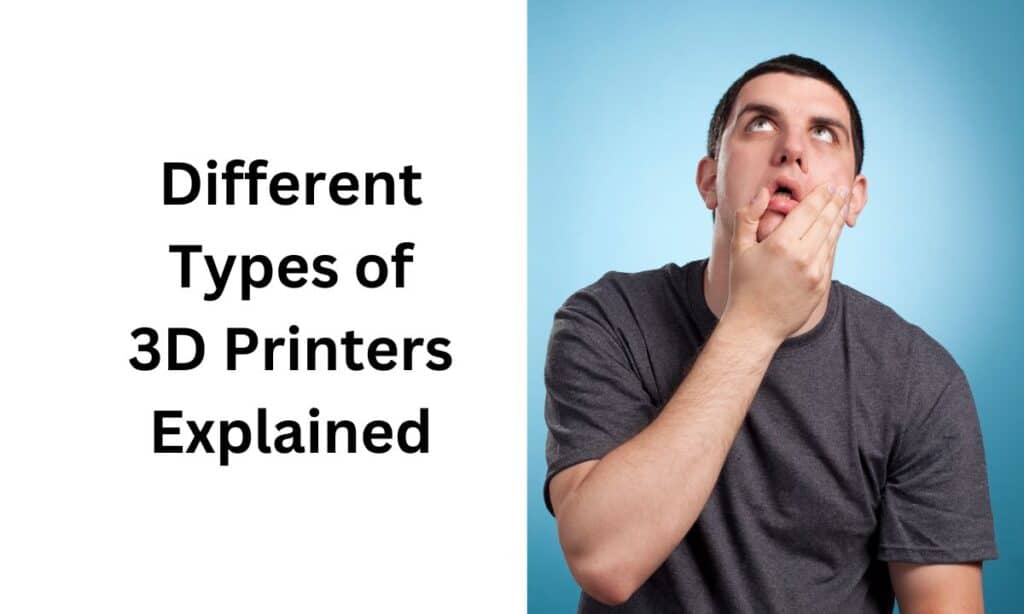
In addition to pricing, understanding the various types of 3D printers is crucial to making an informed decision. Here’s a brief overview of the most common types of 3D printing technologies:
- Fused Deposition Modeling (FDM): The most common and affordable type of 3D printer. It works by melting plastic filament and extruding it layer by layer. Best for beginners and hobbyists.
- Stereolithography (SLA): Uses a laser to cure liquid resin into hardened plastic. SLA printers are known for producing high-detail prints but are more expensive and require more maintenance.
- Selective Laser Sintering (SLS): Uses a laser to fuse powder into solid objects. SLS printers can print in various materials, including plastic, metal, and glass, making them ideal for industrial applications.
- Digital Light Processing (DLP): Similar to SLA, but instead of a laser, it uses a digital light projector to flash an entire layer at once. This makes DLP faster and ideal for detailed prints.
Understanding these types will help you determine the right machine based on your project needs, materials, and budget.
How Much Does A 3D Printer Cost?
Let’s look at the different price categories for 3D printers:
Entry-Level 3D Printers
If you’re a beginner, entry-level 3D printers are an affordable way to get started. These are generally FDM printers, offering basic features and smaller build volumes. Despite their simplicity, they are still capable of producing good quality prints, making them ideal for hobbyists and students.
Price Range: $200 – $500
Popular Models: Creality Ender 3, the Monoprice Select Mini, and the FlashForge Dreamer.
Mid-Range 3D Printers
Mid-range 3D printers strike a balance between affordability and advanced features. They cater to hobbyists, professionals, and small businesses looking for enhanced performance and larger build volumes.
Price Range: $500 – $2,000
Popular Models: Prusa i3 MK3S, the Anycubic Mega S, and the Ultimaker 2+ Extended.
High-End 3D Printers
Designed for professional and industrial use, high-end 3D printers offer top-tier print quality, speed, and precision. These machines are equipped with advanced features and can handle more complex materials and larger volumes.
Price Range: $2,000 – $10,000+
Popular Models: Formlabs Form 2, the Carbon M2, and the Stratasys Fortus 450mc.
Best 3D Printers for Specific Use Cases
Choosing a 3D printer is highly dependent on your intended use. Here’s a breakdown of the best printers for different user groups:
- For Beginners and Hobbyists: Affordable, easy-to-use machines like the Creality Ender 3 and Monoprice Select Mini are perfect for experimenting with 3D printing at home.
- For Professionals: The Prusa i3 MK3S and Ultimaker 2+ Extended are excellent for those looking for higher-quality prints with more advanced features.
- For Engineers and Designers: For complex industrial designs or prototyping, machines like the Formlabs Form 2 and the Stratasys Fortus series offer precision, durability, and speed.
- For Educational Institutions: Schools and universities might prefer mid-range, user-friendly options such as the Anycubic Mega S, which offer a balance of performance and cost-efficiency for classroom projects.
Common Issues and Troubleshooting Tips
Even the best 3D printers can run into problems. Here are some common issues and how to solve them:
- Warping: Often caused by uneven cooling or improper bed adhesion. Use a heated bed and ensure good adhesion with a glue stick or painter’s tape.
- Layer Shifting: This occurs when the layers of the print shift horizontally. It can be caused by loose belts or motors. Tightening the belts usually resolves this.
- Nozzle Clogging: A common issue with FDM printers, caused by debris or melted filament blocking the nozzle. Regular cleaning and using high-quality filament can prevent clogs.
Environmental Impact of 3D Printing
With increasing focus on sustainability, it’s important to consider the environmental impact of 3D printing. While the technology offers the potential for waste reduction in manufacturing, there are still challenges:
- Plastic Waste: Most 3D printers use plastic filaments, contributing to global plastic waste. However, eco-friendly filament options such as PLA (biodegradable plastic made from cornstarch) are becoming more common.
- Energy Use: 3D printers can be energy-intensive, particularly during long print jobs. Energy-efficient printers and sustainable practices can help mitigate this.
- Recycling Opportunities: Some printers and companies are developing systems to recycle old prints or failed projects, allowing for the re-use of materials.
Adding this section will help position your article as a responsible guide that encourages readers to consider sustainability in their purchasing decisions.
Hidden Costs of Owning a 3D Printer
Aside from the upfront cost of purchasing the 3D printer, there are several “hidden” costs associated with ownership that many beginners may overlook:
- Power Consumption: 3D printers can run for hours or even days, consuming a significant amount of electricity. Over time, this can add to your operational costs, especially with larger, industrial printers.
- Upgrade Costs: As technology evolves, new parts, software updates, and accessories become available. While some are optional, others may be necessary to maintain optimal performance or take advantage of new features.
- Storage for Filament and Materials: Depending on your printing volume, you’ll need a place to store filament, resins, or powders. Certain materials require specific environmental conditions to remain usable (e.g., humidity control for filaments).
- Maintenance: Like any machine, 3D printers require maintenance. Regular cleaning, calibration, and part replacement (like nozzles or belts) will add to the long-term cost.
Latest Technologies in 3D Printing
The field of 3D printing is constantly evolving, with new technologies being developed all the time. Some of the latest technologies in 3D printing include:
- Metal 3D printing: Metal 3D printing allows for the creation of complex metal parts that were previously impossible to manufacture using traditional methods.
- Multi-material 3D printing: Multi-material 3D printing allows for the creation of parts with multiple materials, such as different colors or textures.
- 4D printing: 4D printing allows for the creation of objects that can change shape over time in response to environmental factors.
These new technologies are making 3D printing more versatile and accessible than ever before. However, they also come with a higher price tag.
Conclusion
The cost of a 3D printer depends on a variety of factors, including the type of printer, the build volume, the print quality, the features, and the brand and model. Entry-level 3D printers typically cost between $200 and $500, while mid-range printers cost between $500 and $2,000, and high-end printers can cost anywhere from $2,000 to $10,000 or more.
In addition to the cost of the printer itself, there are also additional costs to consider, such as the cost of filament, software, and maintenance.
The field of 3D printing is constantly evolving, with new technologies being developed all the time. These new technologies are making 3D printing more versatile and accessible than ever before, but they also come with a higher price tag.
If you are considering purchasing a 3D printer, it is important to do your research and compare prices from different retailers. You should also consider your budget and your needs to determine which type of printer is right for you.
Frequently Asked Questions (FAQs)
What is the average cost of a 3D printer for home use?
Entry-level 3D printers for home use typically range between $200 and $500. These are great for beginners and hobbyists who want to explore 3D printing without making a large investment.
How much does 3D printer filament cost?
The cost of filament varies depending on the material and brand. Common filaments like PLA or ABS cost between $20 and $50 per kilogram. Specialty filaments, such as those with metal or carbon fiber additives, can be more expensive.
Are 3D printers expensive to maintain?
Maintenance costs depend on the printer and usage. Regular tasks include replacing nozzles, cleaning, and recalibration. You should also factor in the cost of filament, and for SLA printers, resin and cleaning supplies. Budget $50-$200 annually for upkeep.
What is the cheapest type of 3D printer?
Fused Deposition Modeling (FDM) printers are generally the most affordable type, with basic models starting at around $200. These printers are ideal for beginners or casual users.
Can I 3D print with metal at home?
While metal 3D printing is possible, it typically requires specialized industrial-grade printers that are much more expensive than consumer models. Desktop options are emerging but are still costly.


